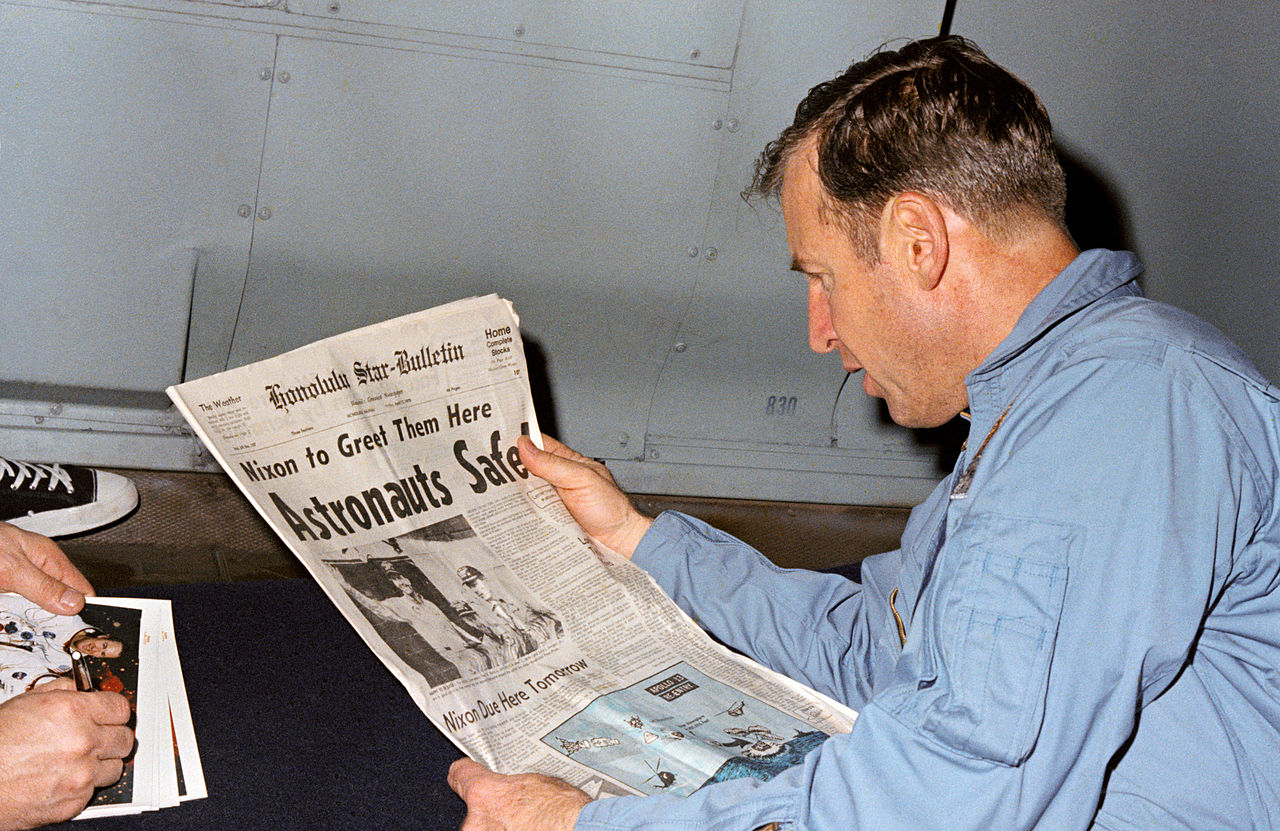The Final Frontier
In the 1960s, amid the Cold War, the US issued a challenge for both sides that would determine their place in history. Apollo 11 was the fifth crewed Apollo mission, but one that went further than any before. It wasn’t just a textbook entry, though, as the day of the Moon landing would have been very different if not for the many building blocks leading up to it.
The Space Race
In 1957, the Soviet Union put the first artificial satellite in space, called Sputnik 1. This was still a while before the Moon landing, but it triggered the Space Race between the Soviet Union and the United States which would lead to it. However, the US wasn’t always opposed to working with its rival.
 NASA's Marshall Space Flight Center, Flickr
NASA's Marshall Space Flight Center, Flickr
It Was Almost A Team Effort
After President Kennedy set the goal of the Moon landing, he initially tried to make it a joint operation. Believe it or not, Kennedy first proposed a team-up to the Premier of the Soviet Union, and later to the United Nations, both of which were declined. Of course, even though it ended up a solely American project, that doesn’t mean all of America was on board.
 Project Apollo Archive, Flickr
Project Apollo Archive, Flickr
Not Everyone Was Happy
Although the Moon landing was such a historic accomplishment, not everyone supported the project’s development. Many people opposed the operation for several reasons, including viewing it as a poor choice of priorities, even calling it a “moondoggle". Still, this lack of enthusiasm wasn’t due to a lack of trying on JFK’s part.
 Project Apollo Archive, Flickr
Project Apollo Archive, Flickr
JFK Made An Iconic Speech
To get the public on the side of the project, President Kennedy gave a speech at the Rice University football stadium, which has been widely quoted ever since. With an emphatic delivery, he stated, “We choose to go to the Moon in this decade and do the other things, not because they are easy, but because they are hard”.
 Defense Visual Information Distribution Service, Getarchive
Defense Visual Information Distribution Service, Getarchive
The Project Name
Every proper program has to have a name, so when the time came for Abe Silverstein—manager of NASA—to come up with one, he decided on Apollo. The Greek god inspired the name, specifically the concept of his chariot riding across the Sun. Of course, all the spacecraft involved would need names as well.
 NASA's Marshall Space Flight Center, Flickr
NASA's Marshall Space Flight Center, Flickr
The Spacecraft Names
The craft built for the Moon landing consisted of three parts: a command module, a service module, and a lunar module. The command module was called “Columbia,” taken from the name of the spacecraft-launching cannon from Jules Verne’s From the Earth to the Moon. The lunar module was named “Eagle” after the emblem on its exterior.
 Project Apollo Archive, Flickr
Project Apollo Archive, Flickr
Nixon Snuck Something Onto The Plaque
On the ladder of the Eagle, a plaque was mounted that read, “Here men from the planet Earth first set foot upon the Moon July 1969, AD. We came in peace for all mankind”. The “AD” was added as a vague religious reference, as President Nixon’s administration requested that a reference to God be included.
 Project Apollo Archive, Flickr
Project Apollo Archive, Flickr
An American Symbol
A lot of thought went into Apollo 11’s emblem. Through multiple suggestions, the command module pilot—Michael Collins—designed an insignia depicting an eagle on the Moon, carrying an olive branch to symbolize the peaceful US Moon Landing. However, even more important than the Eagle, was deciding where it would land.
The Right Landing Spot
When deciding on the lunar landing spot, many requirements were considered, such as a smooth terrain, a path free of large hills or craters, and good visibility via the sun. Eventually, a spot was chosen and named Tranquility Base, after the lunar plain it resided in, the Sea of Tranquility. Of course, there would be no mission without its crew.
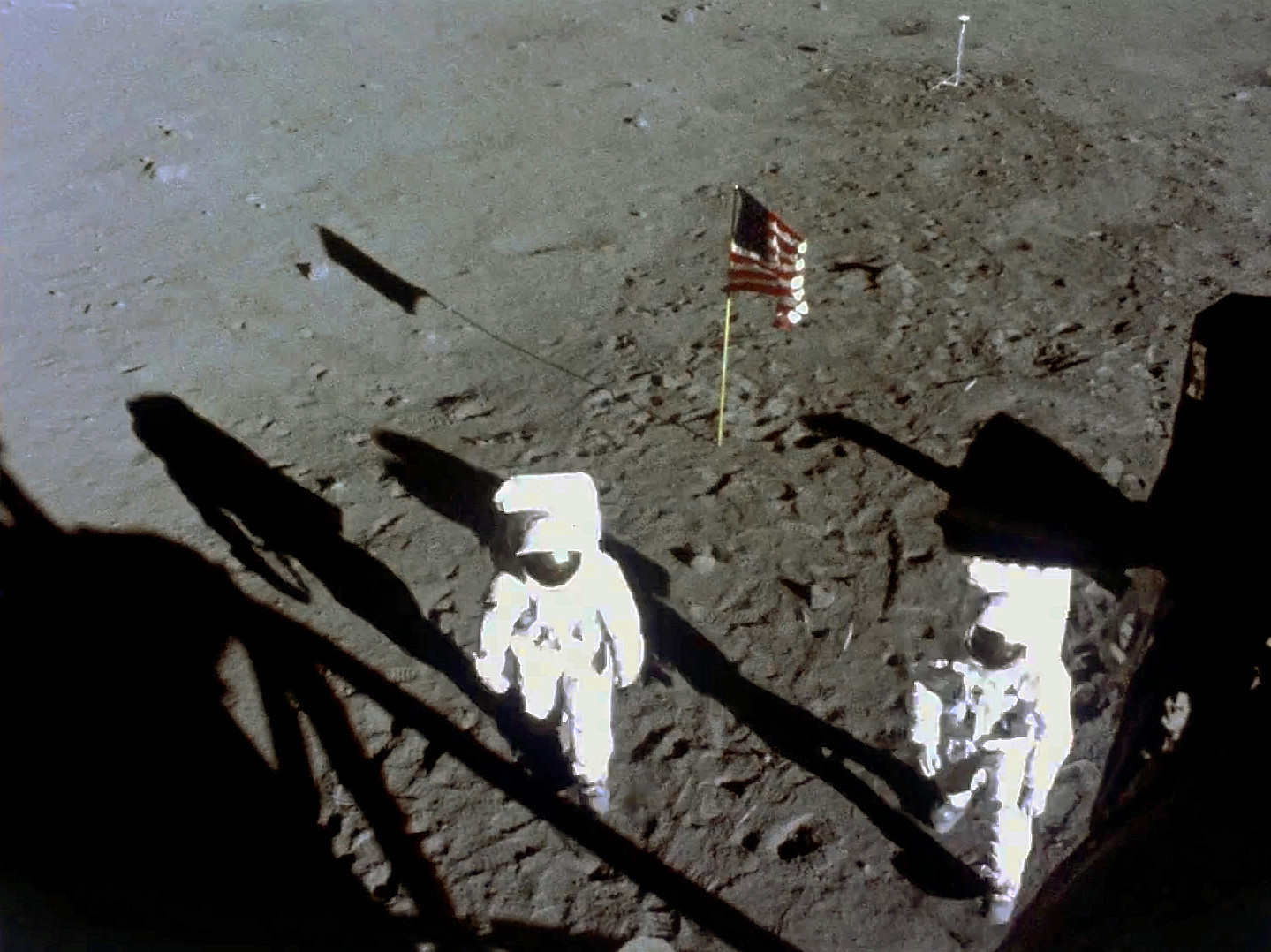 Project Apollo Archive, Flickr
Project Apollo Archive, Flickr
The Right People
Initially, Apollo 11’s crew consisted of Jim Lovell as the Command Module Pilot, Buzz Aldrin as the Lunar Module Pilot, and Neil Armstrong as Commander. However, through several changes to previous missions, Jim Lovell switched with Apollo 8’s Michael Collins. This is what would become the finalized crew roster, but that almost wasn’t the case.
 Project Apollo Archive, Flickr
Project Apollo Archive, Flickr
He Was Almost Replaced
The first men on the Moon are well-known, but one of them almost had the opportunity taken away. As Commander, Neil Armstrong was allowed to replace Buzz Aldrin with Jim Lovell, as Aldrin had a reputation for being difficult to work with. Armstrong declined the offer, and Lovell stayed on the backup crew but still ended up making history.
The Backups Would Also Be Historic
Despite being the Commander of Apollo 11’s backup crew, Jim Lovell didn’t just sit on the sidelines. During the Moon landing, he was a Capsule Communicator keeping contact with the astronauts from the Mission Control Center. Later on, he would Command the Apollo 13 mission, and prove integral to solving its near-fatal incident.
Why The First Man Was Chosen
The decision of who would be first to step on the Moon was given much consideration, and for years, people theorized many reasons behind it. Eventually, it was revealed that Neil Armstrong was chosen as he was the Commander and had a calm and confident demeanor. Of course, not everyone was satisfied with this decision.
 Project Apollo Archive, Flickr
Project Apollo Archive, Flickr
Buzz Wasn’t Happy
Initially, Buzz Aldrin was under the impression that Neil Armstrong was to be the first man on the Moon because he was a civilian. This concept infuriated Aldrin, who tried to convince other pilots that he should be first until it was explained that Armstrong was chosen because he was the Commander.
 Project Apollo Archive, FLickr
Project Apollo Archive, FLickr
Front Row Seats
As one of history’s biggest spectacles, the Moon landing deserved a proper degree of spectators. On the day of the Apollo 11 launch, 1 million people were estimated to have gathered in the large surrounding area, watching from the beaches and highways. However, this wasn’t the only moment with an enormous audience.
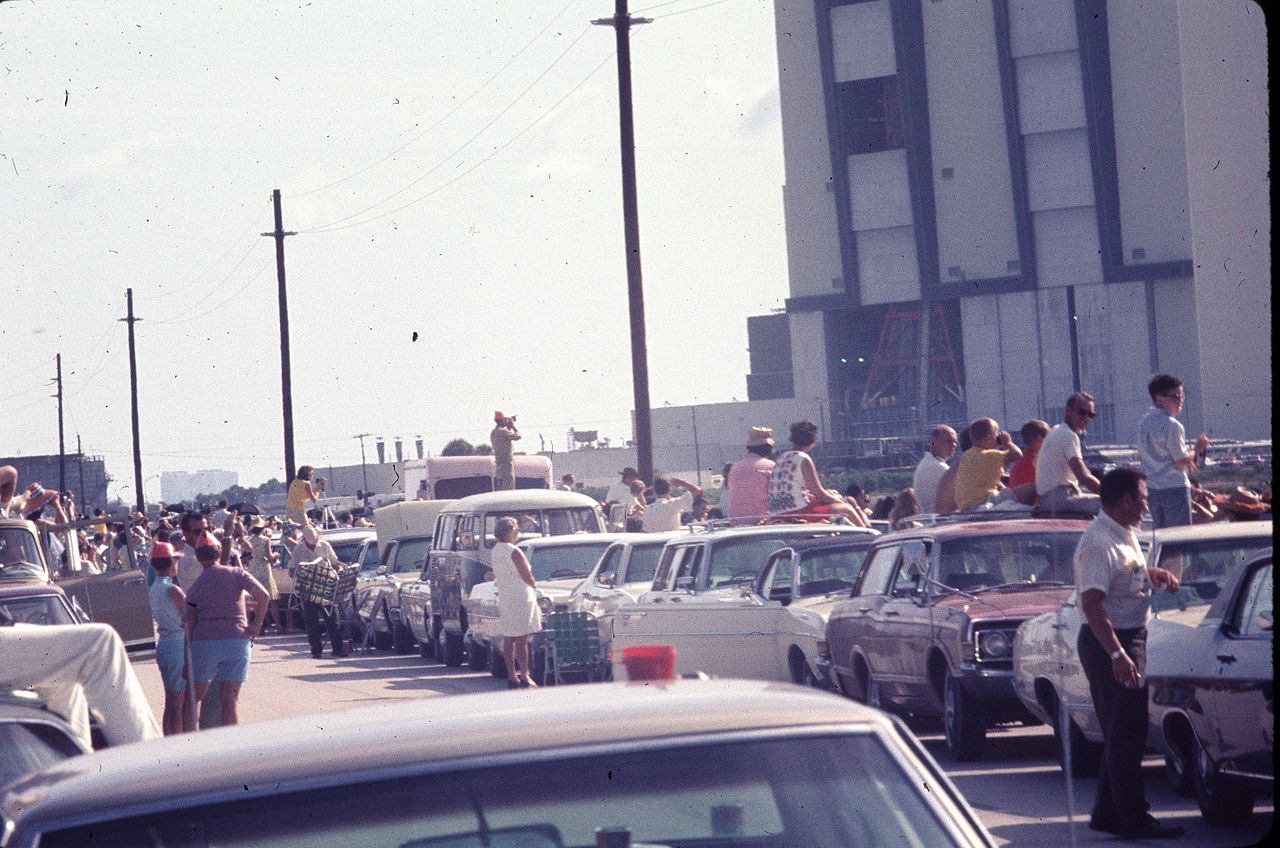 George C. White, CC0, Wikimedia Commons
George C. White, CC0, Wikimedia Commons
A Worldwide Viewership
Being a momentous accomplishment for all humanity, the Moon landing was broadcast live on TV. A global audience of 650 million people tuned in to watch the first lunar steps. Of course, streaming this unprecedented moment carried its own challenges.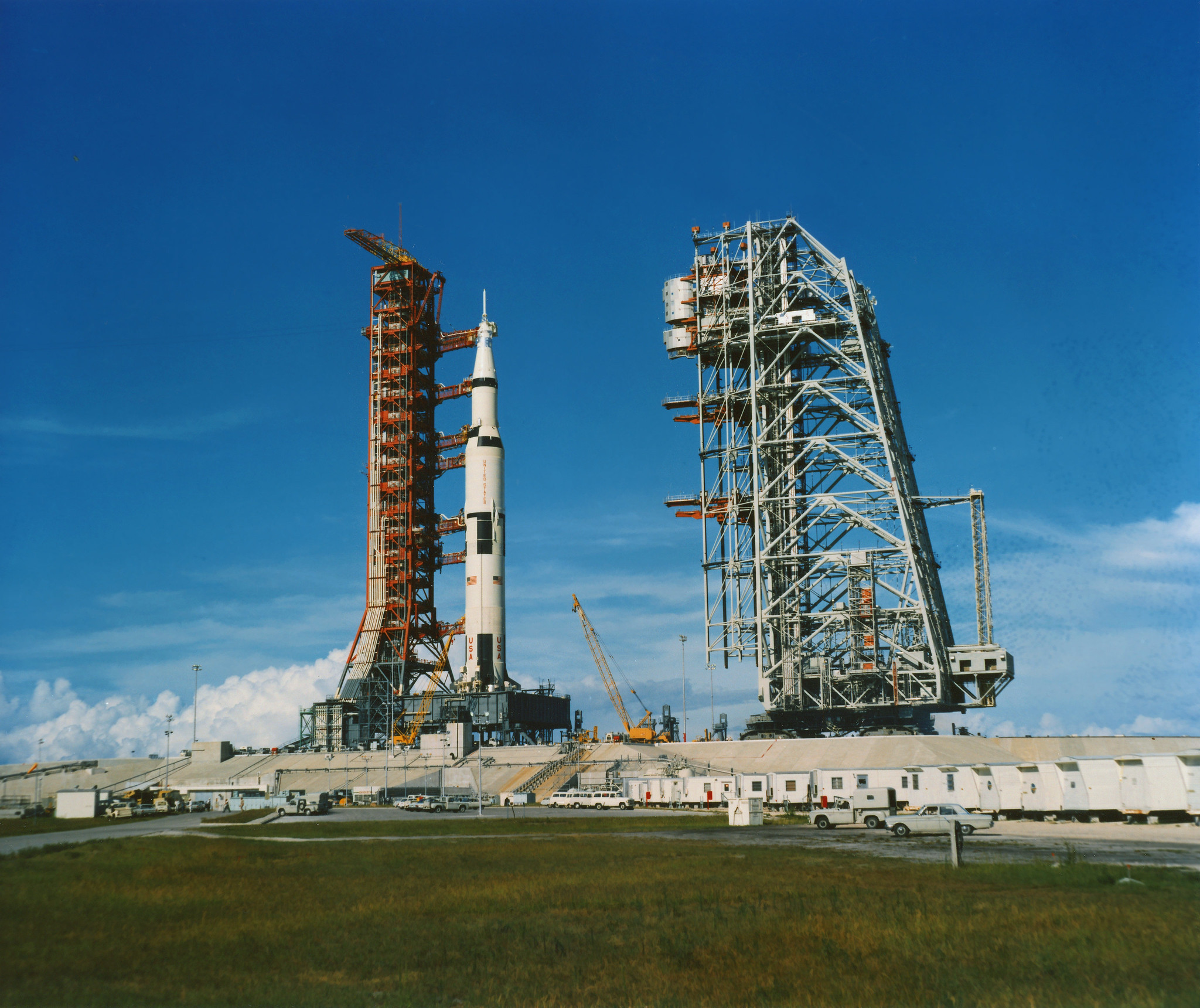 Project Apollo Archive, Flickr
Project Apollo Archive, Flickr
An Unconventional Broadcast
The television used by Mission Control to monitor the Moon landing was not compatible with broadcasting technology, so a solution was devised to allow viewers at home to watch along. Instead, the live feed of the Moon’s surface was displayed on a monitor, and a TV camera was then pointed at the screen.
 Project Apollo Archive, Flickr
Project Apollo Archive, Flickr
They Brought Some Personal Items
Despite the professionalism of the Apollo 11 mission, the crew were still people with their own sentiments. As such, each was permitted to bring a Personal Preference Kit containing personal items they wanted to bring along. For instance, Neil Armstrong brought parts of the Wright Brothers’ Wright Flyer and a diamond-studded astronaut pin.
 Project Apollo Archive, FLickr
Project Apollo Archive, FLickr
It Missed The Target
Whether due to gravity anomalies or its pirouette maneuver, the lunar module unexpectedly began traveling too fast as it attempted to descend from its orbit. As a result, once the Eagle landed, it wound up being miles away from the intended target. However, this wasn’t the only landing difficulty.
 Project Apollo Archive, Flickr
Project Apollo Archive, Flickr
A Stressful Descent
As the lunar module descended, multiple alarms began to sound from the guidance computer, surprising the crew. Mission Control eventually concluded that it was safe to continue and the Eagle could land, allowing the astronauts inside to take those famous steps.
 Project Apollo Archive, Flickr
Project Apollo Archive, Flickr
Aldrin Took Some Private Time
During the time of Apollo 11, NASA was in the middle of a lawsuit in protest of them broadcasting any religious practices in space. Because of this, Buzz Aldrin decided to take communion in private after they landed on the Moon, and avoided mentioning it.
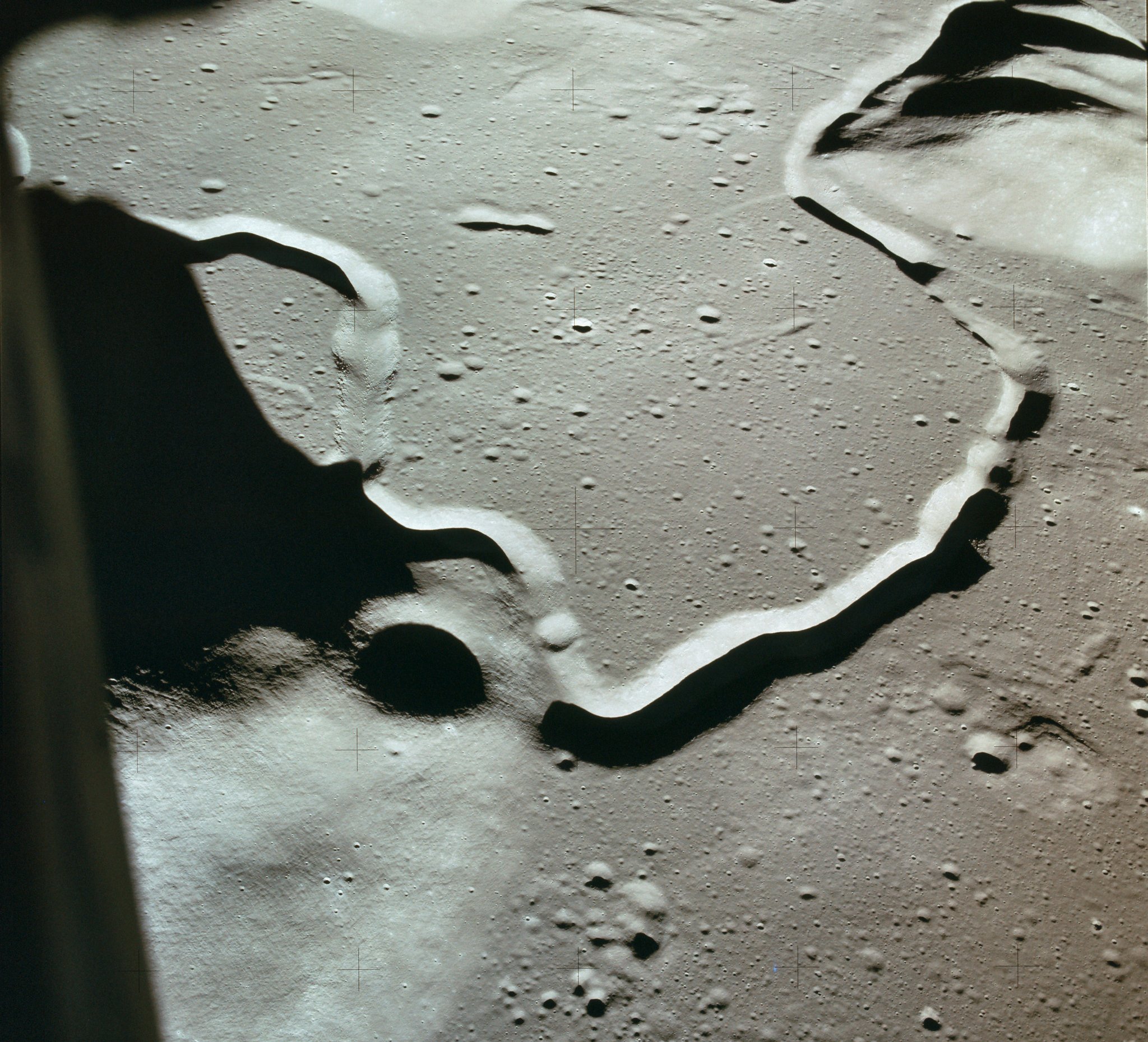 Project Apollo Archive, Flickr
Project Apollo Archive, Flickr
Difficulties With The Flag
If there was one thing important to Buzz Aldrin, it was getting the raising of the flag right. Unfortunately, the telescoping rod of the flag was more tricky than expected, and they couldn’t drive it as far into the ground as they had hoped. Aside from this difficulty, Neil Armstrong found himself having an easier time.
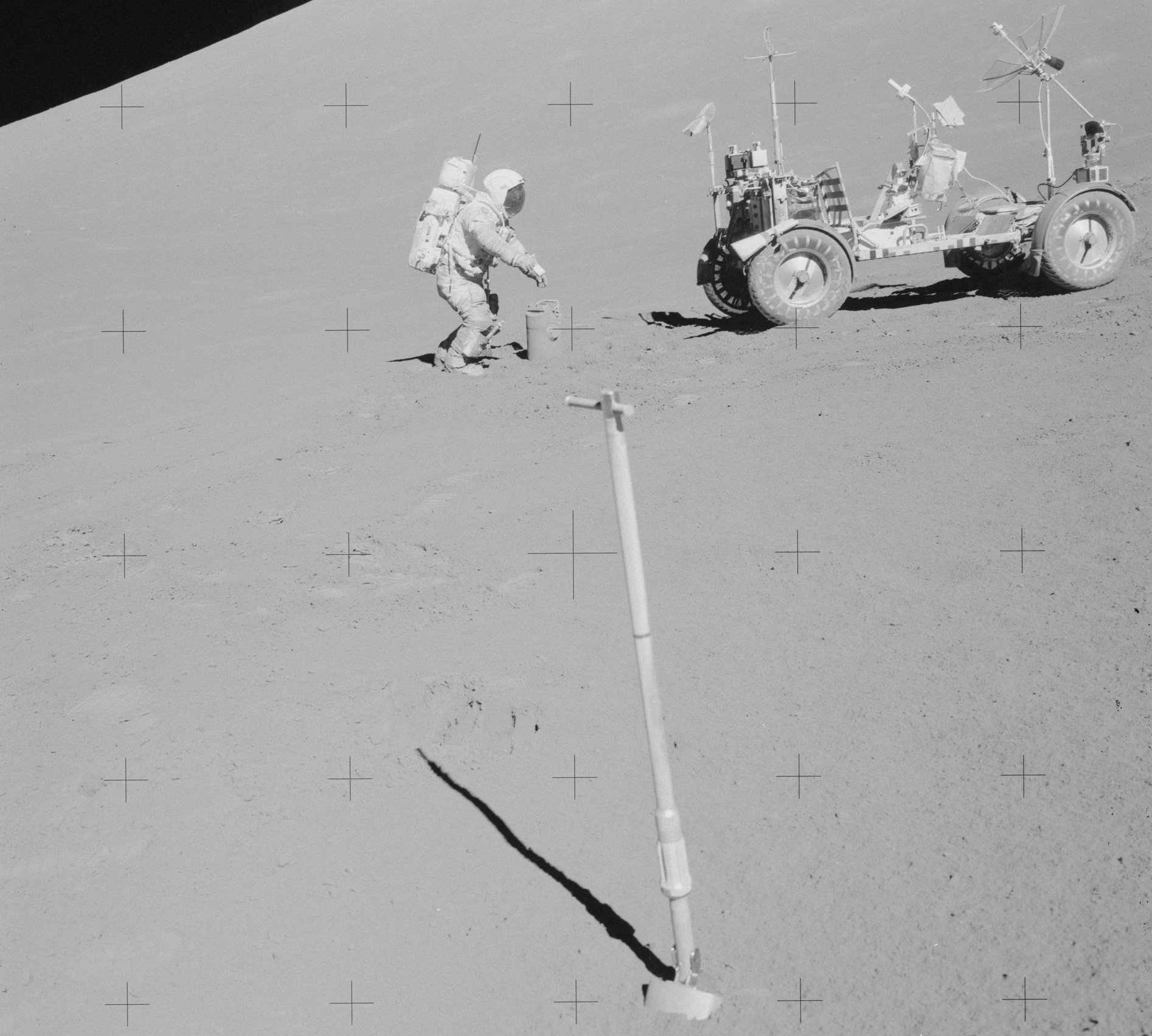 Project Apollo Archive, Flickr
Project Apollo Archive, Flickr
It Was Easier Than He Thought
Comparatively, Neil Armstrong seemed to have a more pleasant walk, at least in one aspect. According to him, walking around in the Moon’s gravity was effortless, and he would later say that it may have even been easier than the simulations they had practiced with. However, this didn’t stop Armstrong from exerting himself.
 Project Apollo Archive, Flickr
Project Apollo Archive, Flickr
A Code For Armstrong’s Health
Throughout his time on the Moon’s Surface, Neil Armstrong knew they were on a time limit, which pushed him to rush to each task. Mission Control had a code phrase that would tell him to slow down to keep his metabolic rates down. Of course, the Apollo 11 crew weren’t all on the surface.
 Project Apollo Archive, Flickr
Project Apollo Archive, Flickr
The Orbit Was Never Lonely
While his two crewmates were on the surface below, pilot Michael Collins remained in the command module, orbiting the Moon. However, he would later state that his day of orbiting was never lonely, and he never considered himself a less important part of the crew.
 Project Apollo Archive, Flickr
Project Apollo Archive, Flickr
Total Time On The Moon
While Buzz Aldrin and Neil Armstrong were on the Moon, they filled their time by planting the flag, figuring out how to move around, and collecting soil samples. All in all, the two of them spent a total of 21 hours and 36 minutes on the surface. However, there was always the chance they could have spent a lot longer there.
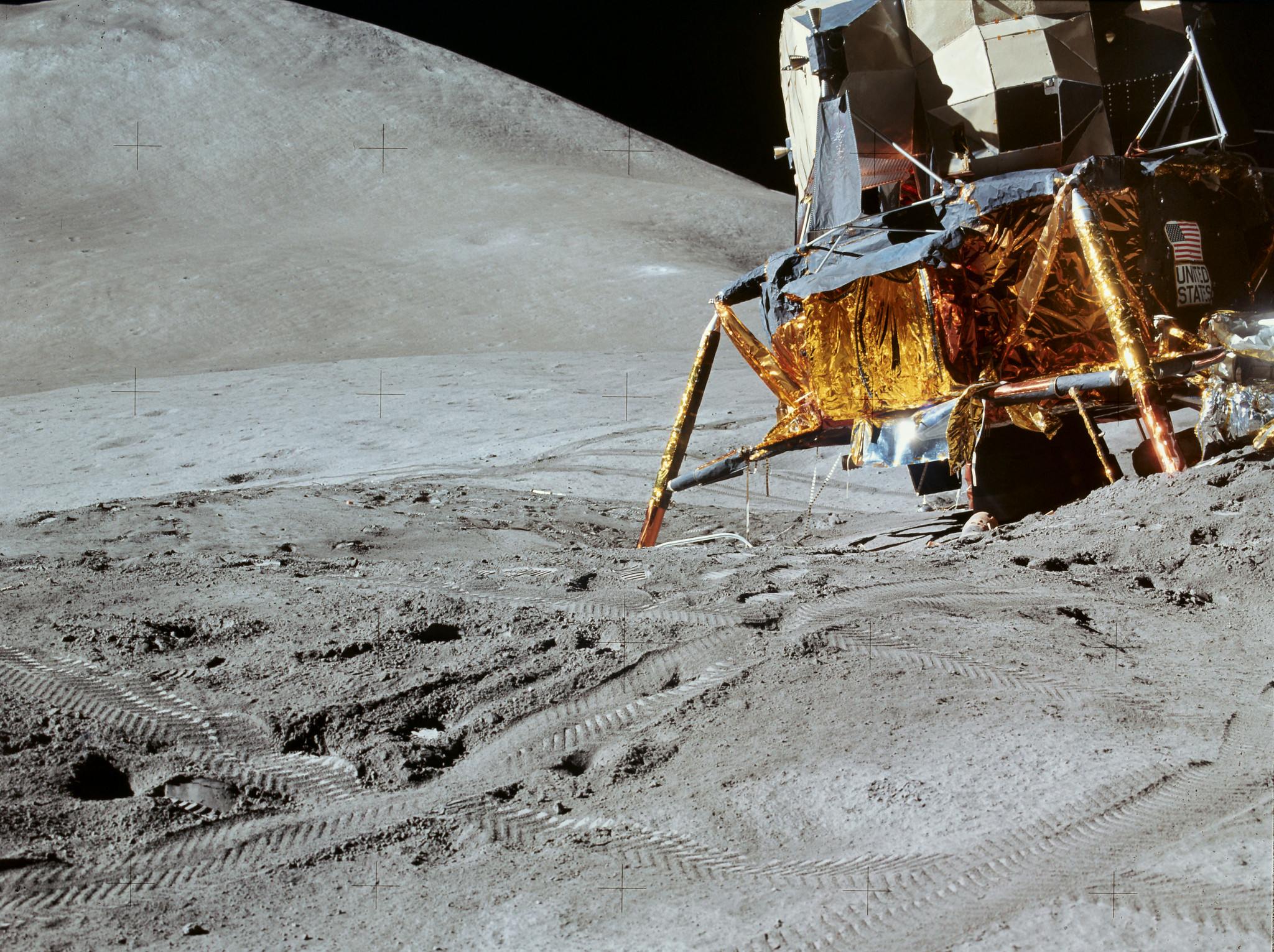 Project Apollo Archive, Flickr
Project Apollo Archive, Flickr
In Case Things Went Wrong
Always trying to be prepared, a speech was written in the unlikely event that the two astronauts became stranded on the moon. In this case, President Nixon would have read the speech on air before communications with them were shut down and a clergyman would perform a public ritual similar to burial at sea.
 Project Apollo Archive, Flickr
Project Apollo Archive, Flickr
Aldrin Almost Broke It
Almost catastrophically, Aldrin damaged a circuit breaker that would arm the main engine accidentally as he moved around the cabin. Thankfully, the tip of a felt-tip pen was able to activate it and they were able to begin their ascent. However, this wasn’t the only mistake during the departure.
 Project Apollo Archive, Flickr
Project Apollo Archive, Flickr
They Knocked Over The Flag
Buzz Aldrin’s desire to get the flag planted right was unfortunately proved fruitless as the Eagle began its ascent. The powerful engine exhaust roared, eventually toppling the flag in time for Aldrin to see it happen. Of course, the flag wasn’t the only thing intentionally left by the astronauts.
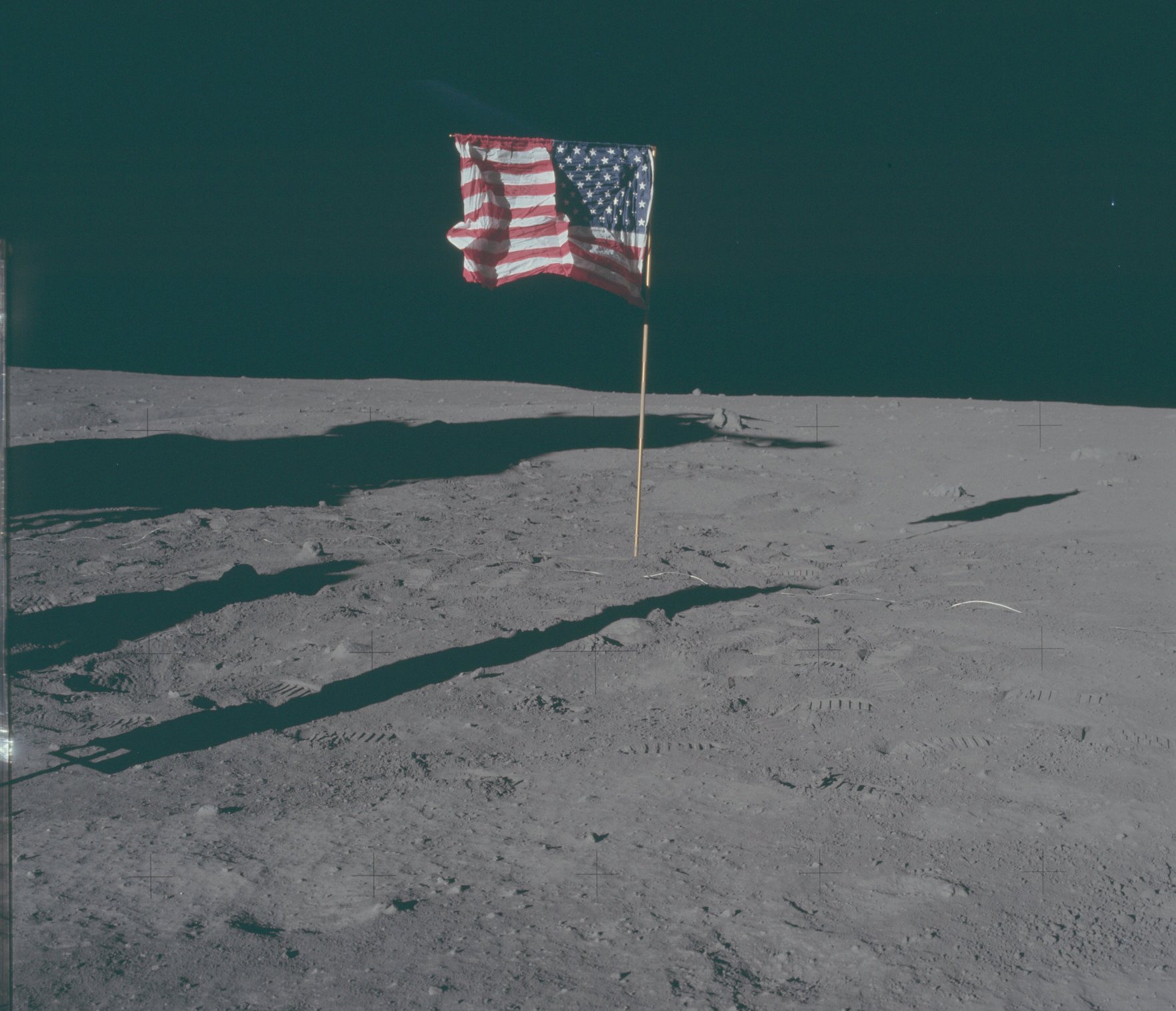 Project Apollo Archive, Flickr
Project Apollo Archive, Flickr
The Astronauts Left Behind A Few Things
The crew of Apollo 11 intentionally left behind several items of significance, including a gold replica of an olive branch, and a disk containing goodwill messages from Presidents Nixon, Johnson, Kennedy, and Eisenhower.
 Project Apollo Archive, Flickr
Project Apollo Archive, Flickr
They Honored Previous Astronauts
Along with the previous items, Aldrin and Armstrong left behind a mission patch of the Apollo 1 crew who tragically perished during a command module test. In another commemoration, they left two memorial medals for Soviet cosmonauts—the first man in space, and the Commander of the first spaceflight to carry multiple crew members, respectively.
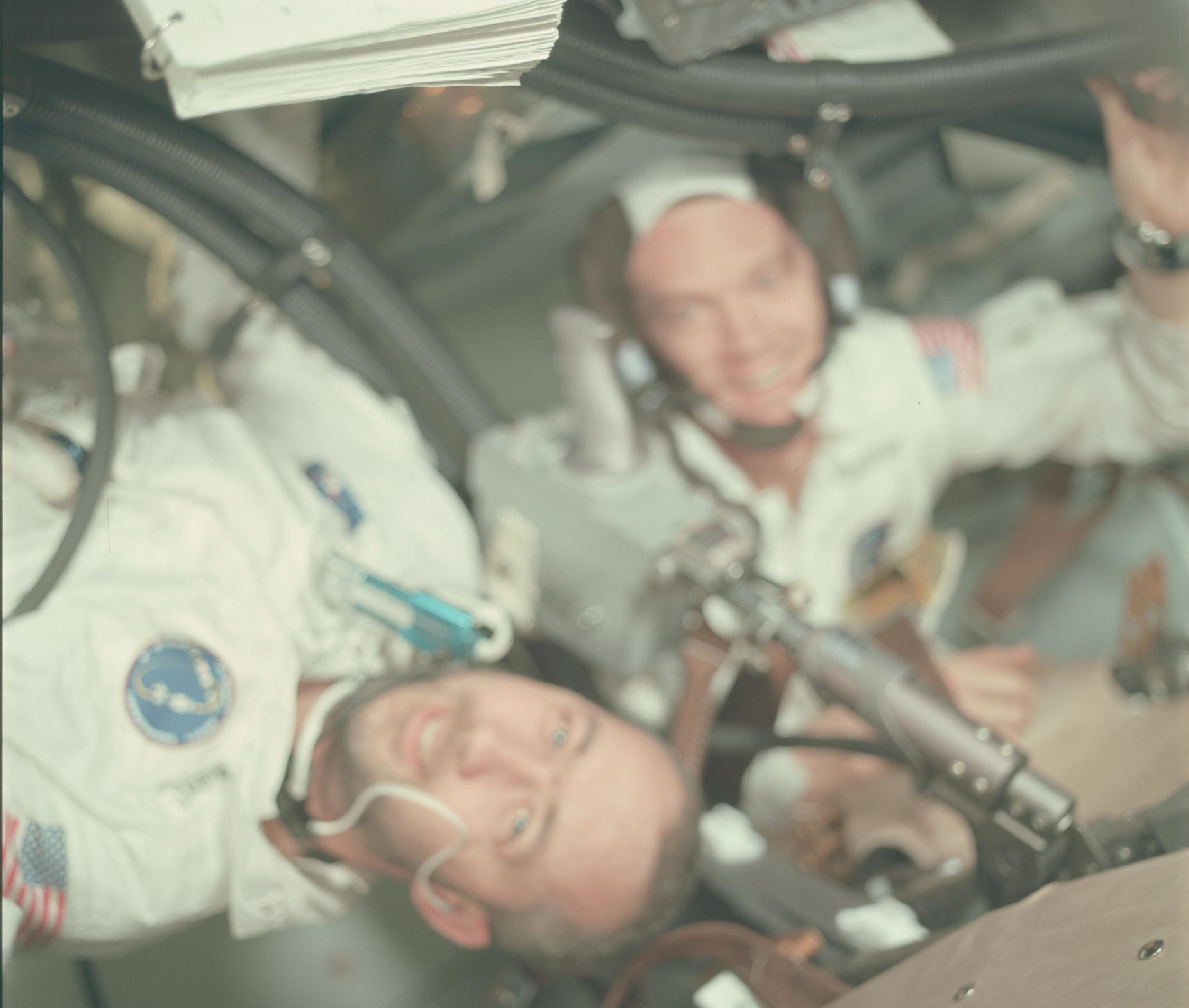 Project Apollo Archive, Flickr
Project Apollo Archive, Flickr
A Final Soviet Loss
As the crew prepared for the return flight, there was also a probe from the Soviet Union called the Luna 15 getting ready to descend to the Moon. In an attempt to beat the Apollo 11 craft back to Earth, the probe’s mission was hastened, only for it to crash onto the Moon’s surface. However, they weren’t the only ones with complications.
 Project Apollo Archive, Flickr
Project Apollo Archive, Flickr
A Last Minute Communications Fix
During the final part of the Apollo 11 mission, as the craft returned to Earth, the tracking station in Guam had a malfunction. A bearing failed, which would have led to a loss of communication if not for some quick thinking. Thankfully, even without time for a repair, the station director’s young son was able to reach inside and grease the bearing.
 Project Apollo Archive, Flickr
Project Apollo Archive, Flickr
They Crashed The Wrong Way
Upon the Apollo 11 craft’s return, it splashed down in the Pacific Ocean, just like it was supposed to. Unfortunately, even then things didn’t go totally right, as it landed upside down in the water. Fortunately, in under 10 minutes, the astronauts deployed flotation bags that flipped the module back up.
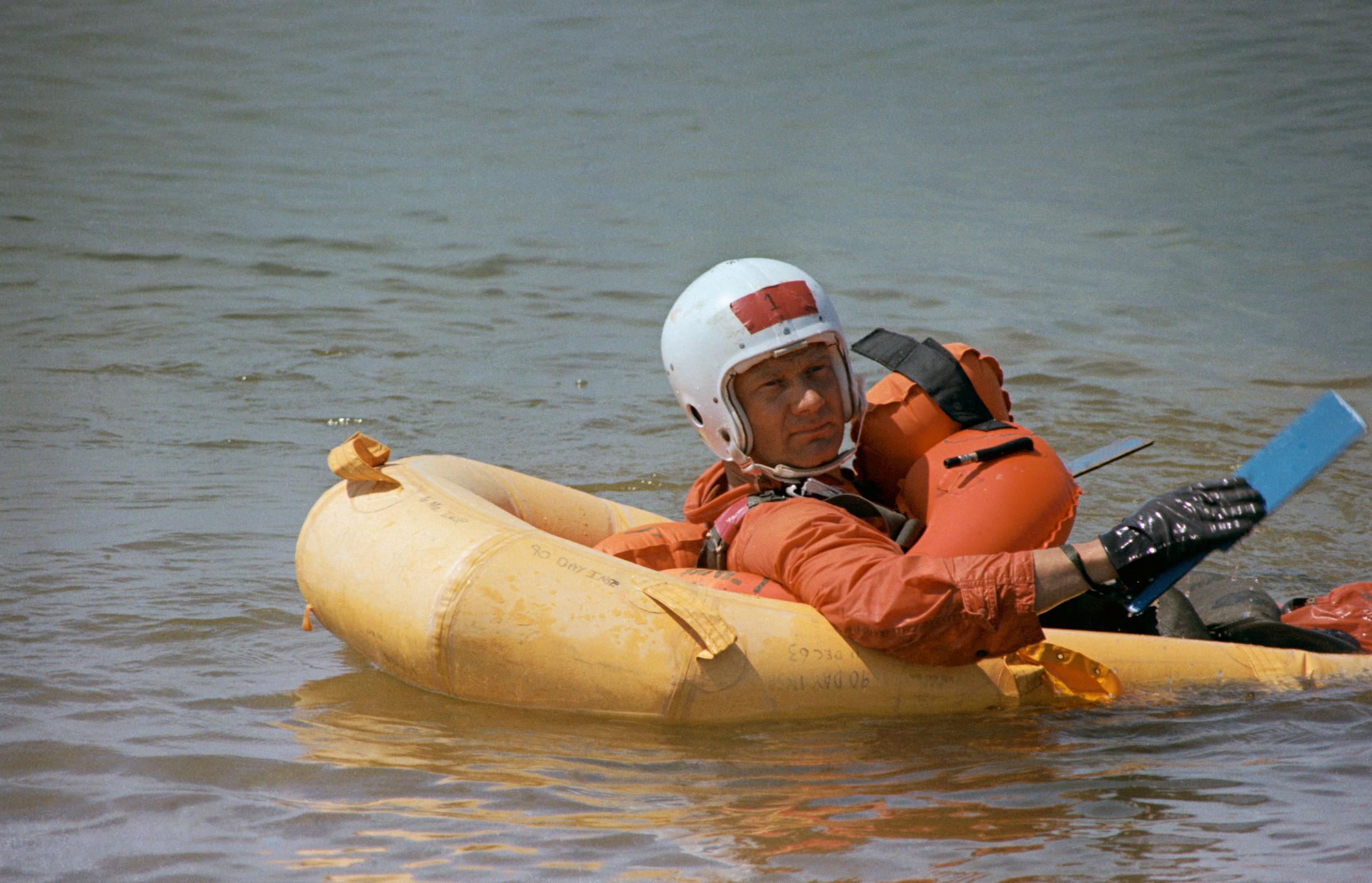 Project Apollo Archive, Flickr
Project Apollo Archive, Flickr
Possible Outer Space Germs
Once NASA arrived to recover the Apollo 11 crew, steps were taken to decontaminate them and their spacecraft, before they were placed in biological isolation garments. All of this was to destroy any pathogens that may have come from outer space, however unlikely that was. However, NASA also went a bit further.
 Project Apollo Archive, Flickr
Project Apollo Archive, Flickr
A Lengthy Quarantine
The Apollo 11 astronauts were placed under a lengthy quarantine, even beyond their initial decontamination. They were brought aboard the USS Hornet, where the Mobile quarantine facility held them for 21 days. Fortunately, they were then given a clean bill of health and able to attend all the celebrations waiting for them.
 Project Apollo Archive, Flickr
Project Apollo Archive, Flickr
The Celebrations
Upon their return, all three astronauts were not only celebrities but seen as American heroes. Two ticker-tape parades were held in New York and Chicago, which they attended, and they also embarked on a worldwide tour to visit 22 countries and meet the world leaders.
They Received Awards
Aside from all the public praise and parades, the three Apollo 11 crew members were awarded by the US government. All three were presented with Presidential Medals of Freedom from President Nixon and Vice President Agnew. Of course, the legacy of their lunar visit isn’t only evident on Earth.
A Lasting Mark
Without the scientific instruments and memorial items left behind, the closest legacy of Apollo 11’s Moon Landing is the very bootprints of Neil Armstrong and Buzz Aldrin. It’s a special kind of enduring legacy, as the lack of atmosphere on the Moon means they most likely won’t go away any time soon.
 Project Apollo Archive, Flickr
Project Apollo Archive, Flickr
Armstrong’s Famous Quote
In a seemingly small change, Neil Armstrong’s words as he took the first steps on the moon may have been obscured by the transmission or his accent. According to him, in his quote, “That's one small step for man, one giant leap for mankind,” he had actually said “a man”.
Despite the mix-up, we all remember his famous declaration—but nobody remembers the ridiculous statement he made next. His next words, "The surface looks fine and powdery. I can pick it up loosely with my toe" don't have quite the same poetic quality, but considering no one had felt the surface of the moon before, the description itself is pretty important.





